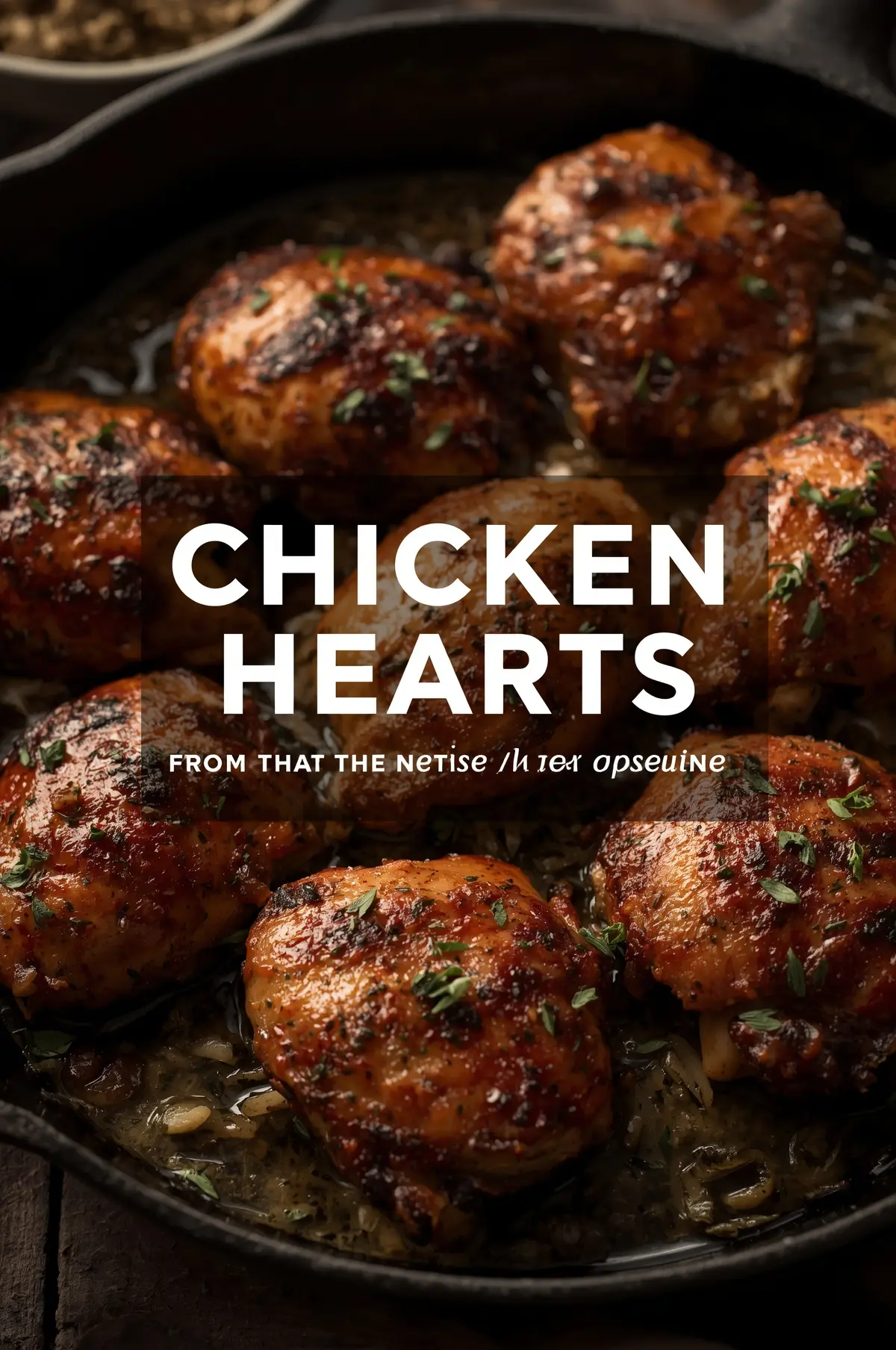Chicken hearts are often overlooked, but they’re packed with flavor, protein, and essential nutrients. With the right preparation, they can be tender, juicy, and absolutely delicious. Whether you want to enjoy them as a snack, part of a main dish, or grilled on skewers, cooking chicken hearts at home is simple and rewarding.
Ingredients
- 1 pound (450g) chicken hearts
- 2 tablespoons olive oil or butter
- 3 cloves garlic, minced
- 1 teaspoon smoked paprika
- 1/2 teaspoon black pepper
- 1/2 teaspoon salt
- 1 tablespoon soy sauce or Worcestershire sauce (optional)
- Fresh parsley or cilantro, chopped (for garnish)
- Lemon wedges (optional, for serving)
- INNOVATIVE DOUBLE-DECKERS DESIGN: This dual air fryer …
- 8 IN 1 VERSATILITY: Midea air fry has 8 preset menus: …
- 3 HEATING TUBES FOR POWERFUL COOKING: Midea air fryer …
Preparation Steps
Step 1: Clean the Chicken Hearts
- Rinse the chicken hearts under cold water.
- Trim off any fat, connective tissue, or blood vessels. Pat dry with paper towels.
Step 2: Marinate (Optional)
- In a bowl, combine olive oil, minced garlic, paprika, salt, pepper, and soy sauce.
- Add the chicken hearts and toss to coat evenly.
- Let them marinate for 15–30 minutes to enhance flavor.
Step 3: Cook the Chicken Hearts
Option 1: Pan-Frying
- Heat a skillet over medium-high heat with a little oil or butter.
- Add the chicken hearts and cook for 5–7 minutes, stirring occasionally, until they are browned and cooked through.
Option 2: Grilling
- Preheat the grill to medium-high.
- Skewer the chicken hearts and brush with the marinade or oil.
- Grill for 4–6 minutes per side until fully cooked.
Step 4: Serve
- Transfer the cooked hearts to a serving plate.
- Garnish with fresh parsley or cilantro and serve with lemon wedges if desired.
- Enjoy as a snack, appetizer, or alongside rice, salad, or grilled vegetables.
Tips for the Best Chicken Hearts
- Avoid overcooking, as chicken hearts can become tough and chewy.
- Pair with bold seasonings like garlic, paprika, or chili flakes for extra flavor.
- Chicken hearts also work well in stews, stir-fries, and skewers.
Cooking chicken hearts is easy and allows you to explore a nutrient-rich, flavorful part of the chicken that many people overlook. With the right seasoning and method, they can become a favorite in your kitchen.
Have you given our recipe a try?
0.0
0.0 out of 5 stars (based on 0 reviews)
Excellent0%
Very good0%
Average0%
Poor0%
Terrible0%
